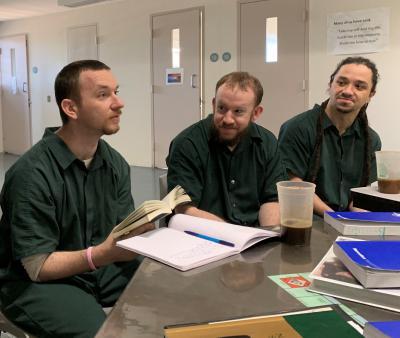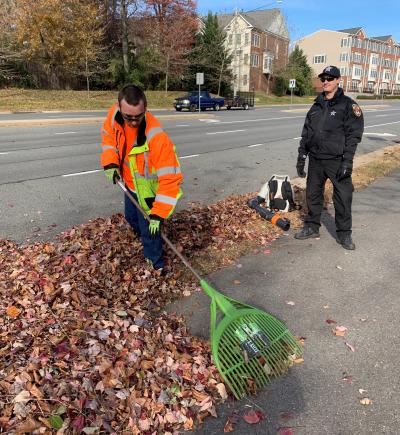November 18, 2019
Eight years ago, a young man named Aaron was arrested on drug-related charges, brought to the Adult Detention Center and bonded out. Days later he was arrested again on new charges, denied bond, convicted and served time. The story repeated itself in the ensuing years. There are many others with similar stories in the ADC.
In the spring of 2018, Aaron was in the ADC serving a state sentence. At the same time, Sheriff Stacey Kincaid was focused on creating an addiction treatment and recovery program for inmates with a history of drug involved arrests and chronic substance use.
“Jail is a place that forces sobriety because drugs and alcohol are not available,” says Kincaid. “But what happens when these same people get out of jail? They are sober addicts. And these sober addicts often return to the same people, places and things that got them into trouble in the first place. We needed to break that cycle and put them on a safe and healthy path toward a sustainable recovery.”

On November 1, 2018, the Sheriff’s Office launched the Striving to Achieve Recovery (STAR) program with 11 inmates. Aaron was among them.
“My whole incarceration this time around has been an extremely different experience,” says Aaron. I have pursued something different for myself.”
Nearly 11 months after placing Aaron in the STAR program, the Sheriff’s Office gave him an opportunity based on the progress he has made to identify and address his history of substance use. In late September, he was moved from the STAR program in the ADC to the Alternative Incarceration Branch (AIB), a minimum security environment primarily for offenders granted alternative sentencing options.
Liane Hanna is the Sheriff’s Office re-entry specialist. She asked Aaron what he could do in the AIB to continue working on his recovery. He offered to run 12-step meetings for his fellow inmates. That is what he does now. Tuesday evenings are for Narcotics Anonymous, and Thursday evenings are for Alcoholics Anonymous.
“Aaron was an original participant in the STAR program,” says Hanna, “and over time, he proved to be a role model for other members. He works hard on his recovery each day and has taken his leadership skills and lived experience to the AIB. Aaron is the first inmate to facilitate meetings at the AIB, which is a huge step forward. He continues to show everyone around him that recovery and change is absolutely possible.”
Aaron was apprehensive at first about how other inmates would relate to him, but it has gone well. He says each group averages 9-11 inmates. “Hearing other incarcerated men say that listening to me share gives them hope is very motivating and reassuring for me.”

Shortly after the move to AIB, Aaron was placed on the Community Labor Force. The CLF provides an innovative approach to incarceration and work release. Labor crews, consisting of well-screened offenders, provide necessary services to the county that otherwise would have been done by county staff or contractors. The CLF operates with work crews of about five inmates each, with one deputy per crew. Inmates volunteer for this assignment, and the Sheriff’s Office always has a waiting list. CLF inmates use the skills they already have, but they also acquire many more skills to increase their employability.
Master Deputy Sheriff Ulsh is assigned to the CLF and has Aaron on his work crew several times per week. “He’s a quick learner and doesn’t need much instruction. He is also receptive when other inmates coach him on how to use the landscaping equipment. He seems to have a good head about him, and he wants to try to help others now.”
How is the CLF working out? “It’s pretty cool,” says Aaron. “It has given me some skills to use when I phase back to the community. It has also added real life structure to my day. I get up at the same time every morning. I have to be dressed and ready to go. It emulates real life, which will come soon. [He is scheduled for release in early 2020.] It’s a lot of responsibility. I’m using expensive equipment that is other people’s property. It makes me feel human. I also like the fresh air and seeing the public.”
Aaron’s post-incarceration plans include staying in a sober living facility, participating in 12-step meetings, finding a job and attending a spiritual retreat with his sponsor.
“We recognize that addiction recovery is a lifelong process,” says Kincaid. “We are equipping inmates with resources and a positive, productive routine so they will have a better chance for success in their post-incarceration future.”
Read about the launch of the STAR program.

